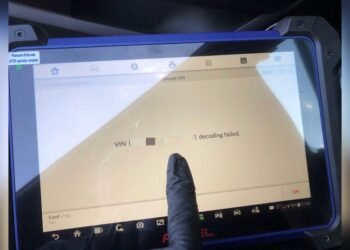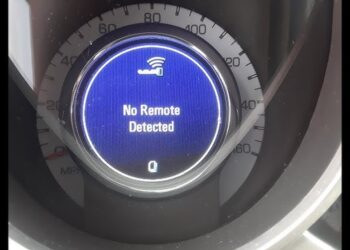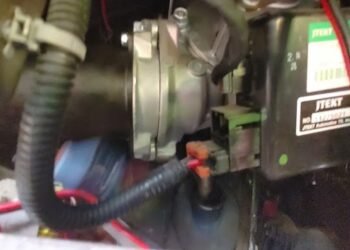Are you struggling with your Elm327 device not connecting to your car’s ECU? It’s frustrating when you want to diagnose your vehicle’s issues, but the connection just won’t happen.
You’re not alone—this is a common problem that can stop you from getting the information you need. But don’t worry, you can fix this. You’ll discover simple, step-by-step solutions to get your Elm327 talking to your ECU again. Whether it’s a loose connection, a blown fuse, or a software glitch, you’ll learn how to identify the cause and solve it quickly.
Keep reading—your car’s health depends on it!

Credit: www.reddit.com
Common Connection Issues
Common connection problems often stop the ELM327 device from linking to the ECU. These issues can cause frustration during car diagnostics. Identifying the root cause helps fix the problem quickly. Several typical faults affect the connection. Understanding these can save time and effort.
Loose Or Damaged Port
The OBD-II port must be secure and intact. A loose or damaged port can break the signal. Check for bent, pushed-back, or corroded pins inside the port. Dirt or debris may block proper contact. Cleaning the port gently often restores connection. Using a multimeter to test voltage and ground helps verify port health.
Ignition Position Errors
The vehicle’s ignition should be in the “ON” position, not “START.” This powers the ECU and allows communication. Connecting while the engine runs may cause errors. Turning the key to the correct position ensures the scanner can read data. A simple check of the ignition state often solves connection issues.
Blown Fuse In Vehicle
A blown fuse can cut power to the OBD-II port. This stops the ELM327 from communicating with the ECU. Locate and inspect the fuse linked to the diagnostic port. Replace any blown fuse with the correct rating. This fix is quick and prevents further connection problems.
Faulty Scanner Hardware
Sometimes the ELM327 adapter itself is the issue. Internal faults or damage can stop it from working. Testing the scanner on another vehicle helps check its condition. If it fails to connect elsewhere, the device may need replacement. Using a reliable scanner avoids wasted time and effort.
Basic Fixes To Try
Facing connection issues between your Elm327 and ECU? Basic fixes can help you solve common problems fast. These simple steps often restore communication without needing expert help. Try these easy checks before diving into complex troubleshooting.
Secure The Obd-ii Connection
Make sure the Elm327 is firmly plugged into the OBD-II port. A loose connection stops data flow. Push the device in until it clicks or feels tight. Wiggling the plug can also help find a better connection.
Check Vehicle Fuse Box
Look for blown fuses related to the OBD or ECU systems. A bad fuse can cut power to the port. Replace any faulty fuse with one that matches the exact rating. This often restores the link instantly.
Test Scanner On Another Car
Try connecting the Elm327 to a different vehicle. This checks if the scanner itself works correctly. If it connects on another car, the issue is likely with your vehicle’s ECU or wiring.
Inspect Port For Debris Or Damage
Examine the OBD-II port for dirt, dust, or bent pins. Foreign objects block signals and cause connection failures. Clean the port gently using compressed air or a soft brush. Bent pins may need careful straightening or professional repair.
Advanced Troubleshooting
Advanced troubleshooting helps fix stubborn Elm327 connection problems.
These steps dive deeper into the vehicle’s system and scanner.
They require patience and careful observation but often solve tricky issues.
Reset The Ecu By Disconnecting Battery
Turn off the vehicle and open the hood.
Disconnect the negative battery terminal using a wrench.
Wait for about 10 to 15 minutes to let the ECU reset.
Reconnect the battery terminal securely and close the hood.
Try connecting Elm327 to the ECU again after this reset.
Inspect Wiring For Damage
Check all wiring from the OBDII port to the ECU.
Look for cuts, frays, or corrosion on the wires.
Use a flashlight to see hidden areas clearly.
Repair or replace any damaged wires or connectors found.
Ensure all connections are tight and clean for good contact.
Disconnect Sensors To Isolate Faults
Turn off the engine before disconnecting any sensors.
Unplug sensors one at a time that link to the ECU.
After each disconnection, try connecting Elm327 again.
This process helps find if a sensor causes communication issues.
Reconnect sensors after testing to avoid other problems.
Update Scanner And Ecu Software
Check the Elm327 scanner for the latest firmware updates.
Visit the manufacturer’s website to download update files.
Connect the scanner to a computer to install updates.
Check with your vehicle dealer for any ECU software upgrades.
Updated software fixes bugs and improves device compatibility.
Credit: www.speakev.com
Diagnostic Tools And Tips
When the ELM327 device fails to connect to the ECU, diagnostic tools can help find the issue. Using simple equipment and smart tips makes troubleshooting easier. These tools check power, wiring, and communication signals step by step. Follow these methods to spot common problems and fix connection errors.
Using A Multimeter To Check Voltage
A multimeter measures voltage at the OBD-II port to ensure power is present. Connect the multimeter probes to the power and ground pins. The voltage should be around 12 volts with the ignition on. Low or no voltage means a fuse or wiring issue. Fixing power supply problems often restores connection to the ECU.
Identifying Bent Or Corroded Pins
Look closely at the OBD-II connector pins. Bent or corroded pins block data signals and cause connection failure. Use a flashlight and magnifier for better view. Straighten bent pins carefully with needle-nose pliers. Clean corroded pins gently using electrical contact cleaner and a soft brush. Good pin contact is vital for communication.
Recognizing Communication Errors
Communication errors appear as failed handshakes or timeout messages on the scanner screen. These errors can come from loose connections or damaged wiring. Check all connectors firmly plugged in. Inspect cables for cuts or breaks. Resetting the ECU by disconnecting the battery can clear minor faults. Persistent errors may signal deeper ECU issues.
When To Replace The Scanner
Test the scanner on another vehicle to confirm it works. If it fails on all cars, replacement is needed. Old or low-quality scanners may lack proper protocols. Updates for scanner software can fix bugs but only up to a point. Investing in a reliable, compatible scanner ensures smooth ECU communication.
Preventive Measures
Preventive measures play a key role in avoiding Elm327 not connecting to ECU issues. Taking simple steps helps maintain a stable connection. These steps protect the device and the car’s port from damage. Follow these tips to keep your scanner working smoothly every time.
Regular Port Cleaning
Keep the OBD-II port clean to ensure good contact. Dust and dirt can block signals and cause connection problems. Use a soft brush or compressed air to remove debris gently. Clean the port regularly, especially if you use the scanner often.
Avoiding Harsh Connector Handling
Handle the Elm327 connector with care. Rough use can bend or break the pins inside the port. Always insert and remove the connector slowly and straight. Avoid forcing it in or out to prevent damage to both the device and the car’s port.
Keeping Software Updated
Update your Elm327 software often. New updates fix bugs and improve compatibility with car ECUs. Check the manufacturer’s website or app for the latest version. Running outdated software can cause connection failures and inaccurate readings.
Routine Fuse Inspections
Inspect the car’s fuses related to the OBD-II system regularly. A blown fuse can stop communication between the Elm327 and the ECU. Use a fuse tester or replace fuses if needed. Regular checks prevent unexpected connection losses during diagnostics.

Credit: www.youtube.com
Frequently Asked Questions
Why Is My Obd2 Not Communicating With My Ecu?
Your OBD2 may not communicate with the ECU due to ignition off, faulty port pins, blown fuse, or outdated scanner software. Check connections, test the scanner on another car, and reset the ECU by disconnecting the battery briefly.
Why Is Elm327 Not Connecting To My Car?
ELM327 may not connect due to ignition off, faulty OBD-II port, blown fuse, damaged wiring, or outdated software. Test scanner on another car. Check pins for damage or corrosion. Reboot ECU by disconnecting the battery briefly. Update scanner software for compatibility.
Why Won’t My Code Reader Connect To My Car?
Test your code reader on another car to rule out device issues. Check the OBD-II port for bent or damaged pins. Inspect the vehicle’s fuse related to the port. Ensure the ignition is in the “ON” position. Reboot the ECU by disconnecting the battery briefly.
How To Connect Torque App To Ecu?
Connect Torque app to ECU by plugging an OBD-II adapter into the car’s port. Turn ignition to “ON” without starting. Pair the app with the adapter via Bluetooth or Wi-Fi. Ensure adapter and app are compatible and updated. Check for secure connection and power supply.
Why Is My Elm327 Not Connecting To The Ecu?
Poor connection, wrong ignition position, or damaged port often cause connection failure.
Conclusion
Fixing an ELM327 connection issue takes patience and careful checks. Start by securing all cables and confirming the ignition is on. Clean the port and check for any bent pins or damage. Testing the scanner on another vehicle helps spot if the problem is with the device or car.
Resetting the ECU and inspecting wiring can clear communication faults. Keep the scanner’s software updated for best results. Small steps can solve most connection problems quickly and save time. Stay calm and follow each fix to get your ELM327 working again.

















